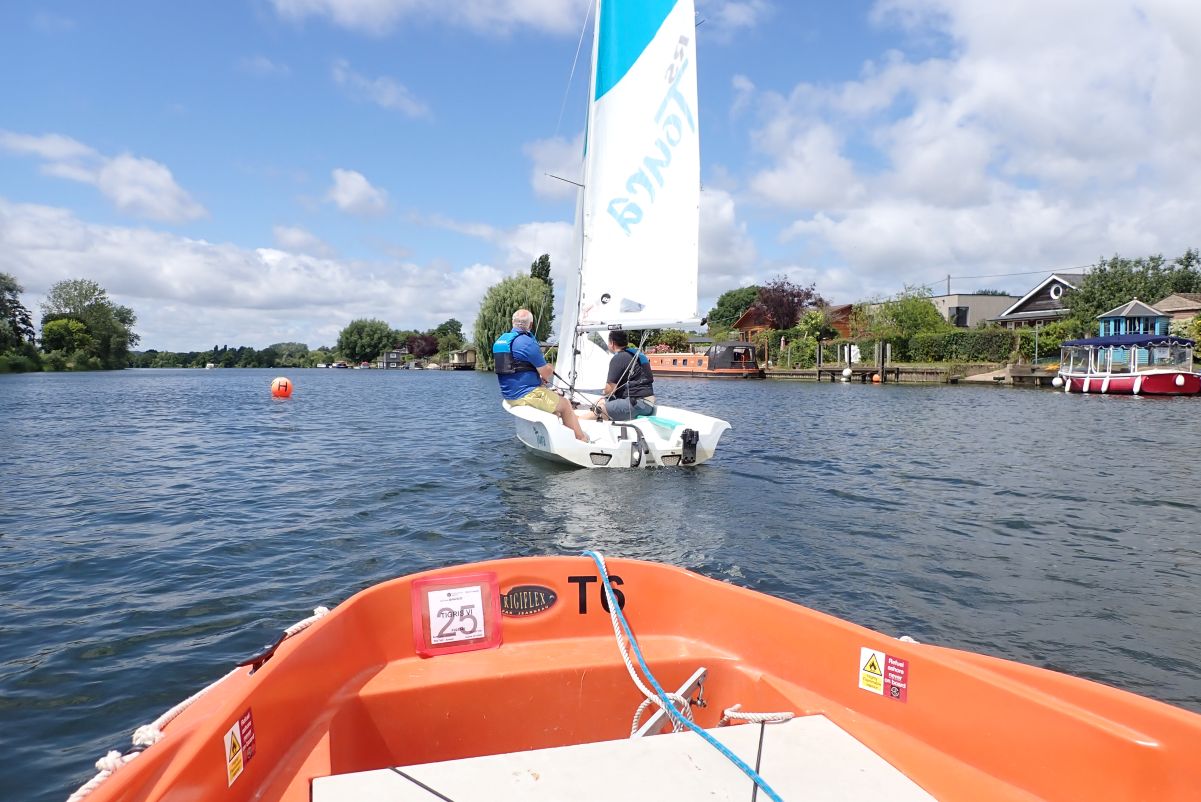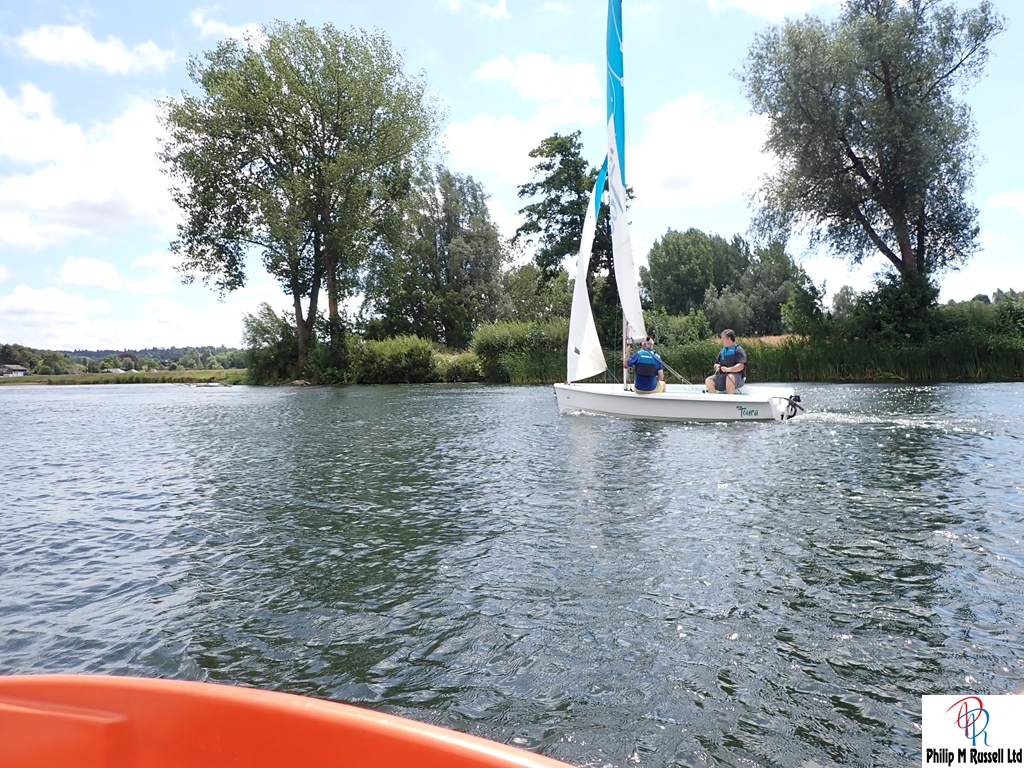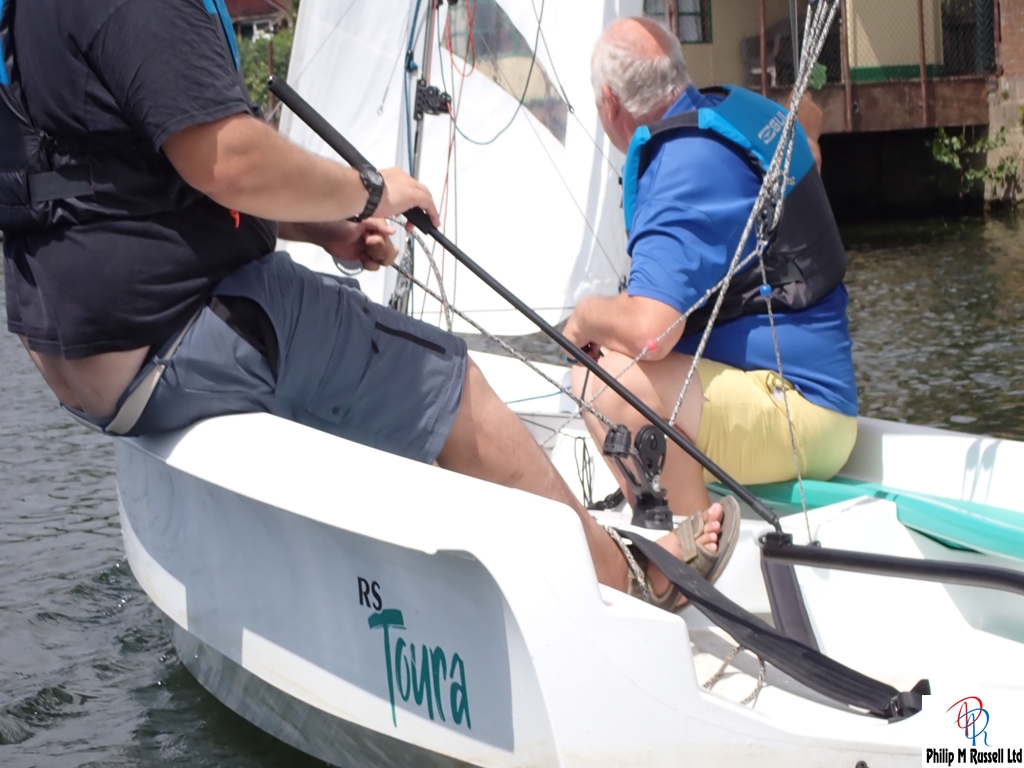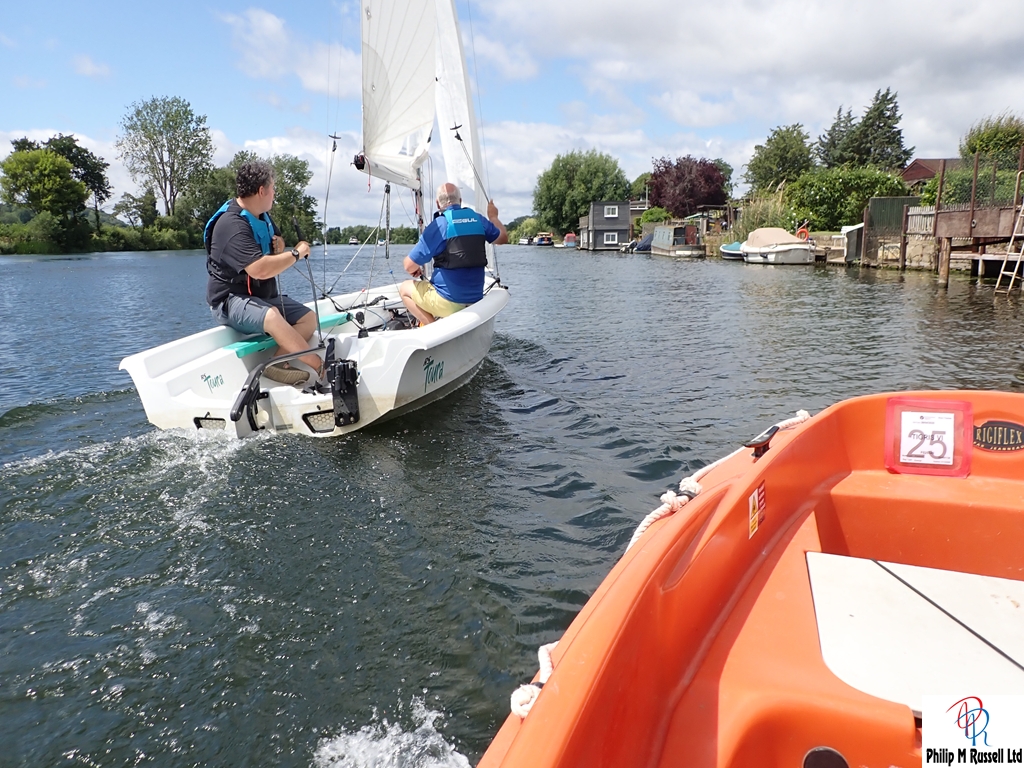admin June 28, 2024 Sailing Previous Lesson Splicing Comments (0)
My instructor asked me a deceptively simple question: "What do you want to learn and achieve?"
Easy.
Finish a race in the same lap as everyone else.
Actually get a handicap — which, funnily enough, requires finishing a race in the first place.
Apparently, to achieve either of these noble ambitions, it helps if you sail up and down the river, rather than across it at an artistic diagonal.
Cue Mark, my ever-enthusiastic instructor, who chased us up the river like a man possessed, shouting (constructively), only to apologise afterwards for shouting at me but in the nicest possible way because I needed to do this to get control of the dinghy.
In the heat of the moment, he demanded I haul in the mainsail with more gusto than I ever thought possible and steer the boat more boldly into the current.
I was also told — rather firmly — to sit on the gunwale and then to lean back out of the boat. For the uninitiated, this is boat-speak for “perch on the very edge of the boat while pretending you’re not about to fall in.” It was, let’s say, well outside my comfort zone. But miraculously, the boat responded. We stopped dawdling sideways and started charging (well, ambling briskly) up the river like we meant it.
Ten minutes later, I was utterly exhausted but oddly triumphant. The boat was still mostly under control, and we’d definitely made headway. I may not have crossed the finish line with the fleet yet, but for the first time, I felt like I’d joined the race.
Even if I was still in the wrong lap.
Let’s face it: sailing on a river isn’t like sailing on a lake, or the sea, or even a very large puddle. The river doesn’t go in a straight line. It wiggles. It meanders. It laughs at your idea of “a good course.” And to make matters more fun, the wind has usually decided to blow directly from where you’re trying to go.
So how do you make your dinghy go faster when you’re tacking every 30 seconds like you're auditioning for Strictly Come Tacking?
Here’s what I’ve learned — mostly the hard way — and some top tips for making your river-bound rocket ship less of a floating picnic bench and more of a sleek, zig-zagging menace.
Tugging the mainsheet like you’re gently coaxing a cat off a sofa isn’t going to cut it. You need to pull it in firmly, ideally before your instructor shouts it from the safety boat (again). The sail should be just on the verge of flapping — no more, no less. If it’s flapping, you’re going sideways. If it’s too tight, you're parked.
Bonus tip: Get your crew to help with the jib, or if you're the crew, pretend you know exactly what you're doing and yell “Ready to tack!” with confidence.
Your bum position matters more than you think. Too far inboard and the boat slogs like a barge full of gravel. Too far out and you get a lovely refreshing dip in the Thames. Find the sweet spot — or better yet, sit on the gunwale (that’s the edge of the boat, not a medieval weapon).
Your mission: keep the boat flat. The flatter it is, the faster it goes. Lean out, hike up, grit your teeth. Think “cat stuck on a curtain rail” and you’ll be close.
There’s a magical line between sailing close to the wind and accidentally stopping altogether. This is the no-go zone, and your boat will punish you for wandering into it by politely ceasing to move.
Point as close to the wind as you can without stalling. If you hear the sails flutter, ease off a smidge. If the boat’s going sideways into the reeds, try tacking before you run out of river.
River sailing means you tack a lot. Possibly more than you blink. You’ve just got settled, balanced, and looking vaguely competent — and now it’s time to throw the boom across your head and scramble to the other side again.
Smooth tacks make fast boats. So:
Plot your course like a chess player. Watch the bends, the gusts, and especially other boats — especially the one helmed by someone who looks like they’re about to do something dramatic (they usually are).
If you can anticipate when to tack before you're forced to by a willow tree or the clubhouse wall, you’ll keep your speed — and your dignity.
You're not going to break any records. You're not going to plane. But if you're still moving when others are stalled, you win. If you can complete a lap without having to reverse out of a tree, you’re practically flying.
Making a dinghy go faster on a river is like dancing in a phone box — all flair, very little room. But with a bit of practice, a lot of trimming, and the occasional deep breath as you nearly crash into the bank (again), you’ll start to find the rhythm. And maybe — just maybe — finish a race on the same lap as the fast lot. Now wouldn’t that be something?



